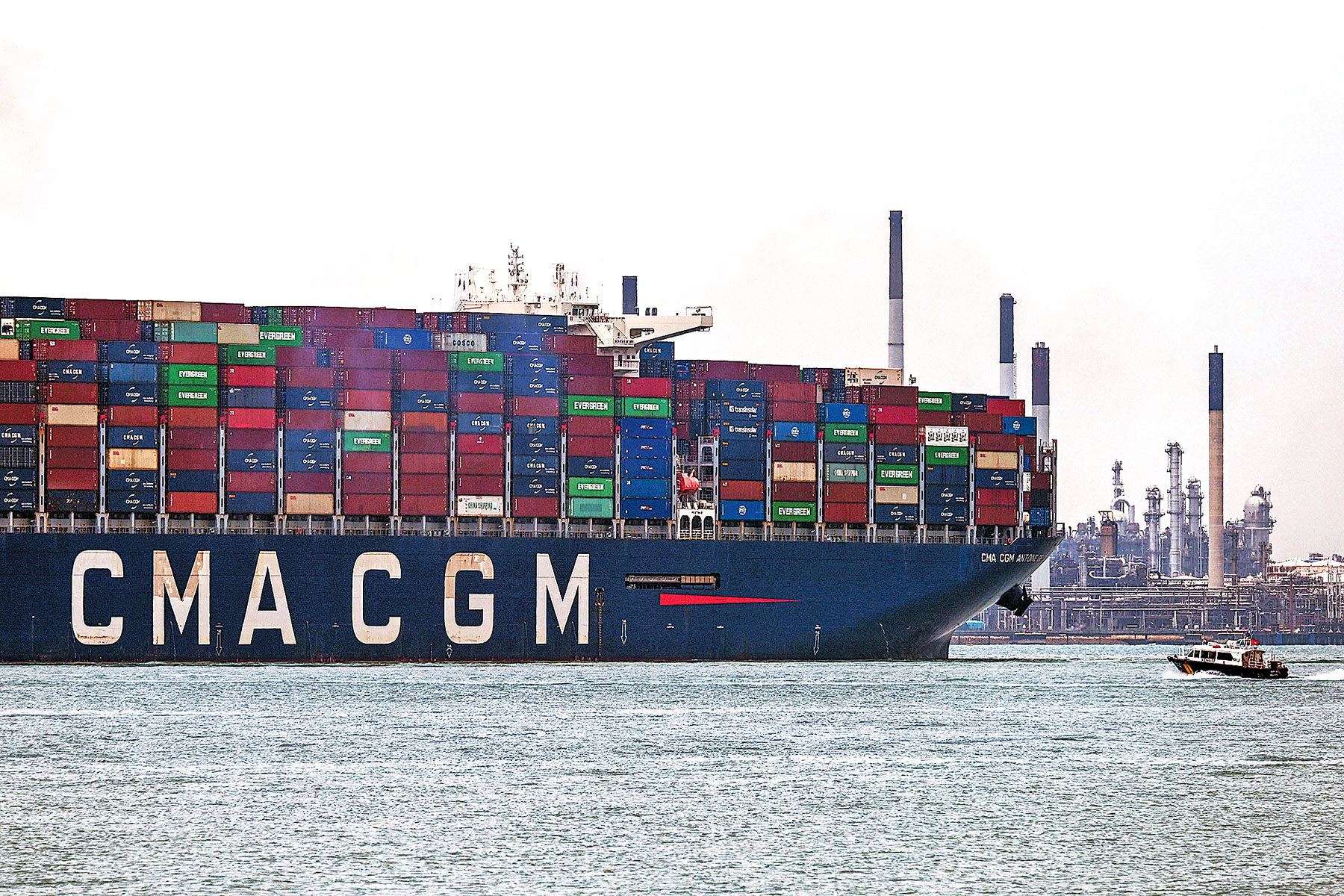
Singapore's Ministry of Trade and Industry has cut the country's growth forecast for 2025 to zero percent to 2 percent in the face of US tariffs, with some economists warning of a possible technical recession this year.
The ministry's new forecast announced on April 14 is a downgrade from the 1 percent to 3 percent range previously.
Singapore's economy grew 4.4 percent last year.
Also on April 14, the Monetary Authority of Singapore further reduced the pace of the local currency's trade-weighted appreciation, in response to easing inflation and rising risks to economic growth.
READ MORE: Singapore seeks drug concessions in US tariff talks, ST says
The ministry also said Singapore's economy grew 3.8 percent year on year in the first quarter, in advance estimates. This is slower than the 5 percent growth in the fourth quarter of 2024 and some market projections.
On a quarter-on-quarter seasonally adjusted basis, the economy contracted 0.8 percent, a reversal from the 0.5 percent expansion in the fourth quarter of 2024.
Analysts polled by Bloomberg forecast 4.5 percent year-on-year growth and a 0.4 percent quarter-on-quarter contraction.
In a ministerial statement on US tariffs on April 8, Prime Minister and Minister for Finance of Singapore Lawrence Wong said Singapore may or may not go into recession this year, but its growth will be significantly impacted.
On April 9, US President Donald Trump announced a 90-day pause on reciprocal tariffs.
However, Singapore is still subject to the flat duty of 10 percent that Trump placed on goods arriving from all countries, which took effect on April 5.
The ministry warned that the tariff war posed "substantial downside risks" to the global economy. It said increased uncertainty may lead to a larger-than-expected pullback in economic activity as businesses and households adopt a "wait-and-see" approach before making spending decisions.
'Technical recession'
The tariff moves could lead to a full-blown global trade war, which will upend global supply chains, raise costs and lead to a far sharper global economic slowdown.
There could also be disruptions to global disinflation and rising risks of recession in both advanced and emerging markets, leading to destabilized capital flows that could trigger latent vulnerabilities in banking and financial systems.
Song Seng Wun, economic adviser with the securities firm CGS International, said Singapore faces the risk of a technical recession, "given the many uncertainties surrounding the trajectory of economic growth".
A technical recession is defined as two consecutive quarters of gross domestic product contraction.
"While not ideal, it is a more favorable outcome than a full-year contraction," Song said.
Selena Ling, chief economist and head of global markets research and strategy at OCBC Bank, said "there is no clear sign of bottoming yet".
"A technical recession is possible as the brunt of the initial US tariff announcements has wreaked significant havoc on financial markets in April, and real economic fallout is anticipated in the coming months."
For the second half of 2025, Ling said, Singapore's economy is likely to sink further from the high base seen in the second half of 2024, when growth was 5.7 percent year on year in the third quarter and 5 percent in the fourth quarter.
ALSO READ: Singapore forms 'economic resilience' taskforce amid possible tariff-induced recession
This would bring her full-year 2025 growth forecast closer to 1.6 percent, assuming that the 10 percent tariff on Singapore remains intact, she said.
Brian Lee, an economist with Maybank, is maintaining his 2025 GDP growth forecast at 2.1 percent, slightly above the Ministry of Trade and Industry's new range.
"We are penciling in a growth slowdown, but not a recession at this stage," Lee said.
Growth in manufacturing was firmer than expected at 5 percent in the first quarter of 2025, though moderating from the 7.4 percent expansion in the fourth quarter of 2024, he said.
This points to front-loading of activity in March amid a race to manufacture and ship out orders before the US reciprocal tariff announcement on April 2, Lee said.


